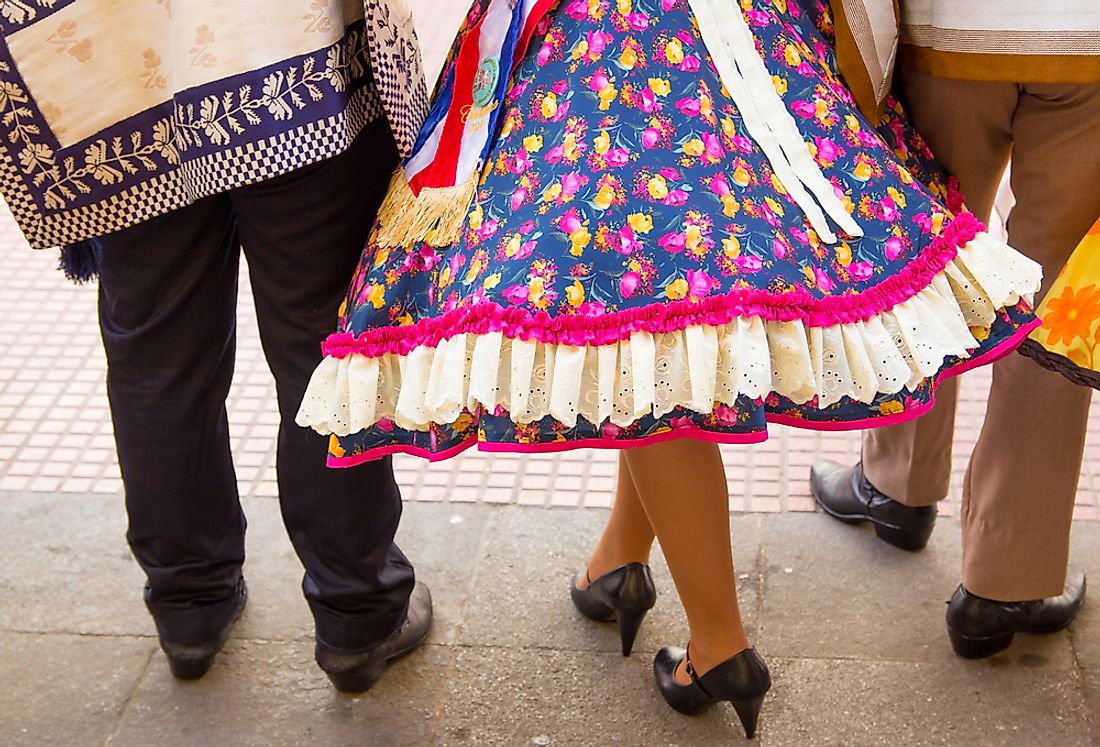The Culture Of Chile

The culture of Chile has been influenced by the geographic isolation of the country and its relatively homogeneous population. Indigenous cultures of Chile blended with European (especially Spanish) cultures make up the present Chilean culture. Within the country, there is considerable diversity between the North and South of the nation with distinct dance, music, and art forms. Various indigenous groups and immigrant populations settling in the country have contributed to the evolution of the culture of Chile.
5. Chilean Religion And Festivals
The majority of Chileans are Roman Catholics (73%) while 15% of the population are Protestants. The rest of the population are affiliated to various other faiths like Jews, Greek Orthodox, and Muslims. 8% of Chileans are not affiliated with any religious faith. Many religious festivals are held in Chile and La Tirana is one of the most colorful among these festivals. During this festival, more than 150,000 people dance in the streets of the village of La Tirana wearing vibrant costumes and devil masks. Immaculate Conception is a Christian festival celebrated by the Chileans on December 8. Pilgrimage to Santuario de la Virgen de lo Vásquez, a religious shrine near Santiago, is common during this festival.
4. Cuisine Of Chile
Food plays an important role in Chilean culture. The cuisine of Chile is a blend of indigenous cuisine with European cuisine. Spanish, Italians, British, French, and Germans all having influenced the cuisine of Chile. Ensalada chilena is a common Chilean salad consisting of sliced onions, tomatoes, fresh cilantro with oil and vinegar dressing. Porotos granados, the national dish of the country combines indigenous ingredients (corn, beans, and squash) with Spanish contributions (garlic and onion). Seafood is also an important part of Chilean cuisine. Machas (razor clams), cochayuyo (seaweed), locos (abalone), erizos (large sea urchins) are some of the common seafood consumed in the country. A soup made of conger eel, potatoes, tomatoes, spices, herbs and onions known as the caldillo de congrio is another traditional delicacy in the country.
3. Chilean Music
The Cueca is the national dance of Chile that was primarily promoted during the Pinochet regime in the 1970’s and 80’s to promote Chilean nationalism and cultural pride. The Tonada is another popular form of Chilean music. Folk music was popularized in Chile by folk music groups like Los de Ramon, Los Cuatro Huasos, Los Cuatro Cuartos, and others. During the 1960’s, native musical styles were revived and became associated with political activism but later during the military rule in the 1970’s, all forms of musical and other expressions against the military regime were discouraged. New musical bands started emerging again after the return of democracy and heavy metal, and alternative rock bands were favored by young Chileans.
2. Chilean Arts And Literature
Chilean culture has also always encouraged fine arts and performing arts and artists. The Chilean Academy of Painting, established in 1849 has inspired and produced brilliant artists and painters. Roberto Matta, Carlos Sotomayor, Claudio Bravo are some famous contributors to Chilean fine arts. Gabriela Mistral and Pablo Neruda are two famous Nobel Prize-winning Chilean poets whose literary work have a significant influence on the Chilean culture.
1. Games In Chile
Football is a highly popular sport in Chile and Chileans of all ages and backgrounds take part in this game. Both skiing and snowboarding activities are also favored by the geography of Chile since the snow-capped Andes Mountains, the transverse, and coastal mountains cover a major part of the country. Chile also has a large number of beaches where surfing is a popular sport. Basketball and rodeo are two other popular sports of Chile.







